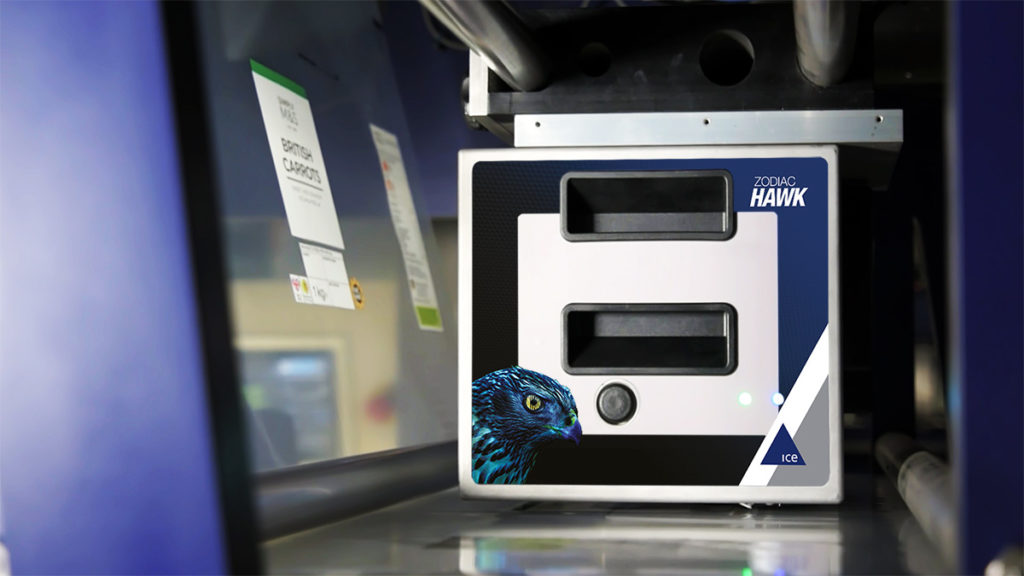CLEARMARK is celebrating two decades in business. The Nottingham-based coding equipment specialist started life with a team of just three people, but has grown to the point where it now employs a team of 90 labelling professionals.
The firm said sustainability has been the one ‘constant companion’ in the company’s 20-year journey. Clearmark has enjoyed success with its ICE (Interactive Coding Equipment) range. It started with the ICE Zodiac thermal transfer printer and by 2003 the large character ICE Torus case coder was introduced with a patented ink reclaim system.
Each ICE printer is said to have subsequently delivered environmental enhancements, including ‘reliability, ease of use, performance and better Overall Equipment Effectiveness (OEE)’.
Citing the intelligence that goes into supermarket shelf-life labels as an example of technical coding advances, MD Chris Simpson said, “Supermarkets and the issue of waste has forced the coding data pace. From the legibility of dates to automating a seemingly simple 10 day to expiry date requires coding machines to intelligently adapt to recognise public holidays or leap years. Resolving this in collaboration with several of the largest supermarkets was just one way in which Clearmark disrupted the status quo.”
Food waste, Chris added, is now deemed as big an issue as single-use packaging. Protecting food and ensuring the best before and sell by dates are given as much visibility as the visual branding has been one project in which Clearmark collaborated with a major retailer on.
Despite the pressures, plastic remains the main packaging material used to maintain food freshness. Thermal transfer overprinting is described by the company as the ‘ideal choice’ of coding and marking technology, allowing machines to print at extreme temperatures, speeds and under varied factory conditions without compromising on print quality.
However, recognising that new packaging combination materials, card and paper would become the norm, in 2010 Clearmark unveiled its ICE Viper thermal inkjet printer. The solution used fast-drying inks that are compatible with porous materials.
Chris said it was around the ICE Viper launch date that data-rich labels started to gain traction. “This was all driven by quality control and being able to clearly demonstrate the provenance of products, improve safety and reduce waste through transparent supply chain tracking technology,” he revealed. With the ICE Viper, manufacturers were presented with the option to connect up to four printheads to create text, barcodes, 2D matrix codes and even logos.
Automating the printing and application of labels with the launch of the ICE Vulcan came next. “Our Intelligent Motion drive is a simple measure that requires minimal maintenance as there are fewer moving parts, such as brakes and clutches,” Chris added.
With the recent launch of the Vector Pallet labelling System, Clearmark now has a coding solution for all three packaging types: primary, secondary and tertiary. The move means customers can now buy their pallet labeller from the same company that supplied their case labeller and thermal transfer overprinter, which operate using familiar interfaces and share common parts.
Chris said the ‘technical elegance’ of the archive structure in all ICE printers means upgrades are easy to perform. He explained, “Since our inception the technical elegance has evolved. However, our intelligent software solutions and the fact that all our printers share a common platform, means that we can email files if a technology update is required. Frankly, it means that printer obsolescence is not really a factor that concerns any of our customers.”
Seven years ago, Clearmark eliminated the use of compressed air on its core printer products. In another ‘eco-breakthrough’, ribbon waste was addressed with the launch of the ICE Zodiac Hawk. A longer length 1,200m ribbon and indexing technology to remove space between prints now means fewer ribbon changeovers.
 “Our sustainability story is one of continual progress that ripples through our culture and is the foundation of our business,” Chris said. “The time for talking has passed. This next decade will be an era of sustainable actions. As testimony to our team commitment, we have installed electric vehicle charging points and by the end of 2021 will switch on our solar panels to capture as much source energy as possible to power our manufacturing site.” Our people, partners and customers are all aligned to this agenda, and we look forward to reporting on the next phase.”
“Our sustainability story is one of continual progress that ripples through our culture and is the foundation of our business,” Chris said. “The time for talking has passed. This next decade will be an era of sustainable actions. As testimony to our team commitment, we have installed electric vehicle charging points and by the end of 2021 will switch on our solar panels to capture as much source energy as possible to power our manufacturing site.” Our people, partners and customers are all aligned to this agenda, and we look forward to reporting on the next phase.”















